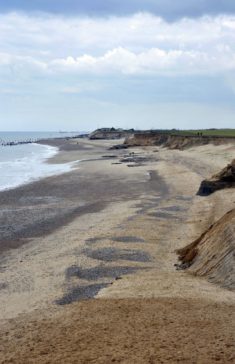Civil Engineering Companies and Initiatives to Protect the Louisiana Coast
As one of the four states situated along the Gulf of Mexico, Louisiana has experienced a progressive recession in its coastlines. As early as the 1930’s, research groups have deduced that more than 1,900 square miles of land have already been lost to sea, with these figures increasing every day. Experts claim that this region of the United States is among the fastest disappearing lands on the planet.
Facing the Current Problem
According to the Louisiana Coastal Protection and Restoration Authority (CPRA), the continuous rise in sea levels are showing disturbing patterns when it comes to loss of land along the Louisiana gulf coast, especially in wetlands, marshes and swamp areas. If government officials won’t act now to protect these areas, more than 1,750 square miles of land may soon disappear.
Experts explain that these wetlands act as natural barriers against storm surges, keeping floods from reaching inland and devastating urban areas. If these coastal areas are allowed to erode away, flooding may become more extreme in the future, and possibly more damaging compared to the August 2016 Louisiana Floods. Costs of relief and rehabilitation may grow tenfold, reaching over $20 billion annually.
Conservation Projects
In response to these pressing concerns, it was in 2007 that the CPRA kick started a massive and comprehensive plan to restore the Pelican State’s coasts, keep the wetlands intact, and prevent flooding. The initiative is estimated to cost nearly $50 billion, and is already underway. Many trusted civil engineering companies in the state have been consulted to come up with efficient master plans to raise levees, put up dikes and spillways, improve drainage plans, and much more.
The CPRA further states that the Coastal Master Plan does not only rely on designing and building structures, but also in studying the movement of water along these wetlands and evaluating levels of salinity. These continuous research efforts are all intended to provide data that will make future policies for transportation, oil and gas companies and land use work in favor of keeping the coast intact.
Furthermore, these conservation projects also have the end goal of keeping the natural habitats of protected species of flora and fauna. With this, even the public is enjoined to play their part. Local schools and nonprofit organizations are already campaigning for cleaning the marshes and swamps and educating the youth on the region’s rich biodiversity. Beaches and state parks are protected and well-maintained, and locals are encouraged to be responsible visitors.
Helping Local Residents
Aside from focusing on solutions to prevent land loss within the next few years, civil engineering firms have also been consulted for projects to support local residents that live near these marshlands. The US Department of Housing and Urban Development (HUD) announced in January 2016 that the state will receive $92 million in support for these coastal communities.
To be specific, Native American tribes like the Chitimacha, Biloxi and Choctaw reside on hundreds of acres of land near the southeast region of the state. Structural engineers have already been working on the current drainage systems in these communities. A portion of the funds will be to help some members of these tribes resettle in low risk areas, and to build these new communities to be more resilient to floods.
With all these efforts, the future of the Louisiana coastline seems bright. It is undeniable that a bulk of these decisions rest on the shoulders of local officials, civil engineering companies and other professionals. However, residents of the state certainly play a more important role in preserving these regions and keeping them intact for future generations to appreciate.
Sources
The $50 Billion Plan to Save Louisiana’s Coast Gets a Rewrite, NOLA.com
Coastal Protection and Restoration Authority, Coastal.LA.gov
LA Receives $92M from HUD for Coastal Communities, Disaster Resilience, BisNewOrleans.com












